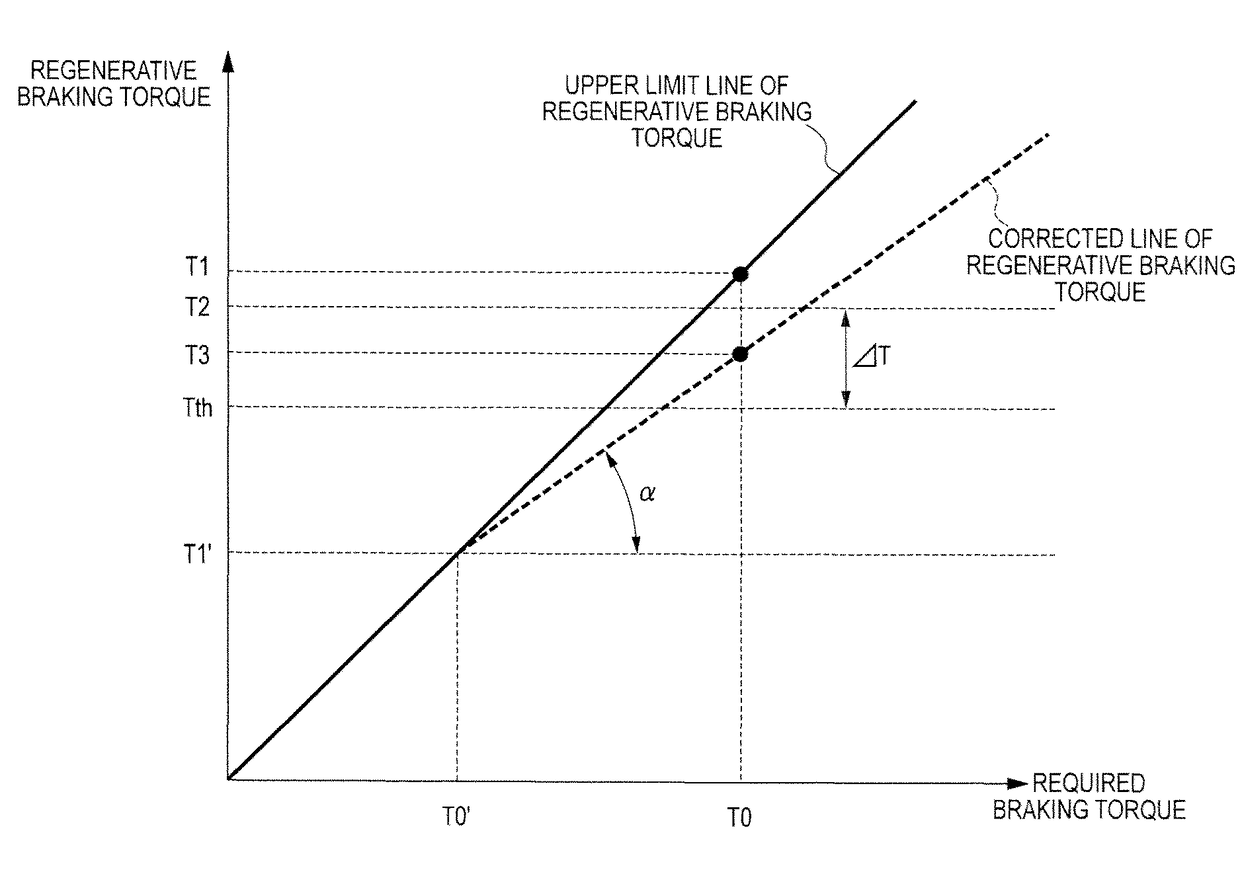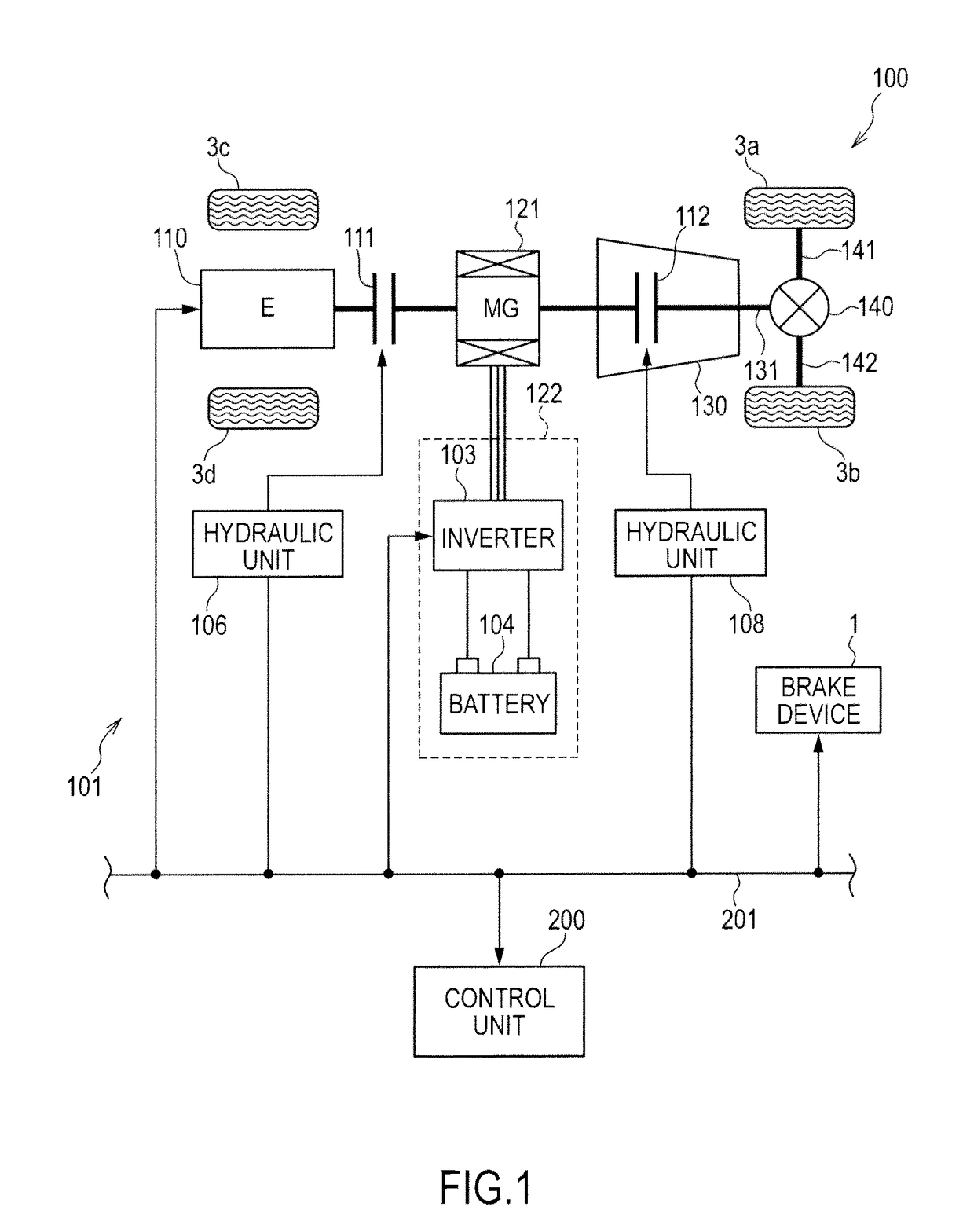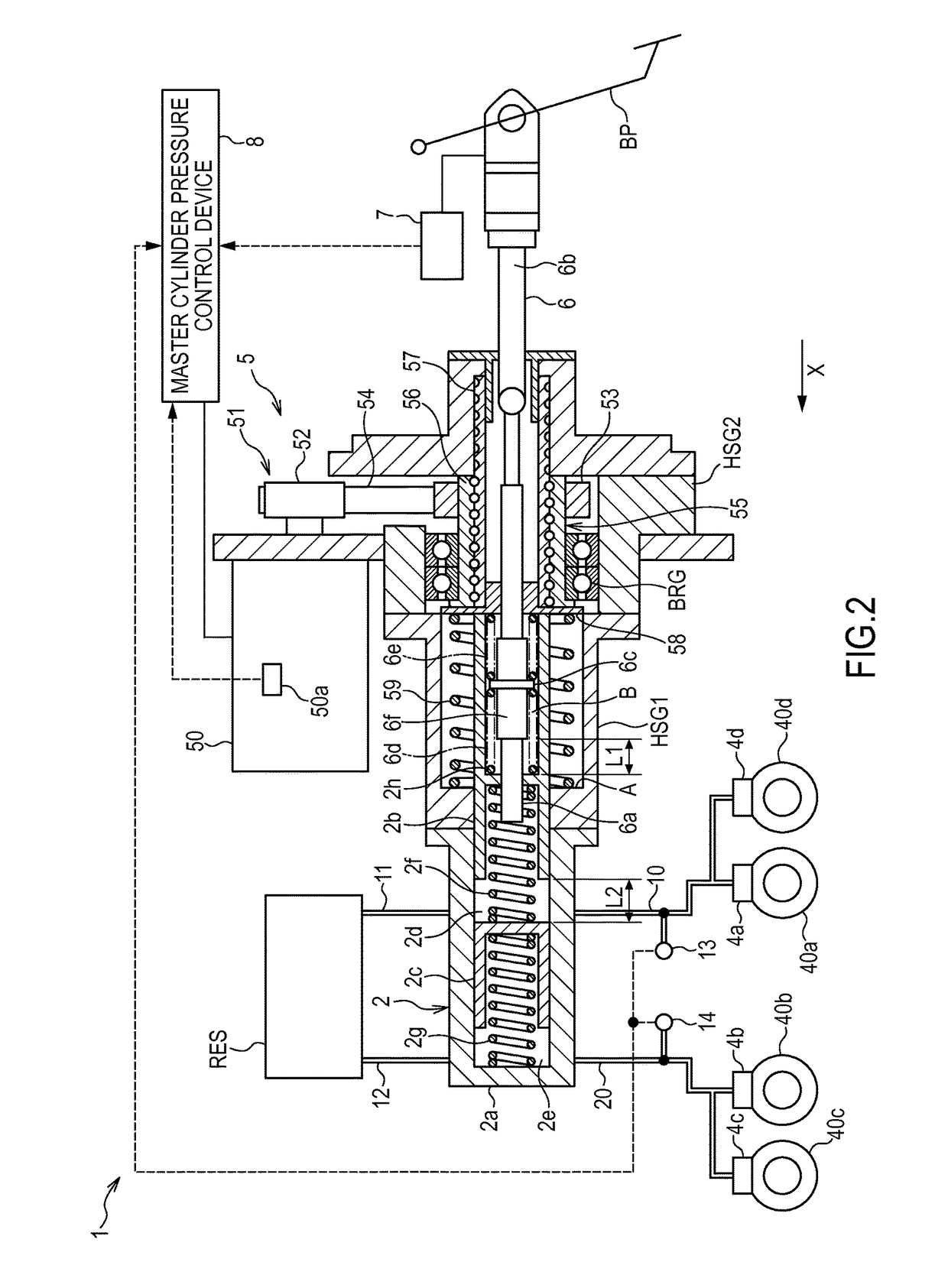Braking control device and control method
a technology of braking control and control method, which is applied in the direction of braking components, electric devices, brake systems, etc., can solve the problems of increasing causing the driver to experience discomfort, and achieve the effect of reducing the proportion of the regenerative braking torqu
- Summary
- Abstract
- Description
- Claims
- Application Information
AI Technical Summary
Benefits of technology
Problems solved by technology
Method used
Image
Examples
first embodiment
[0021]FIG. 1 is a view showing an overall configuration of a hybrid vehicle according to a first embodiment of the present invention.
[0022]A hybrid vehicle 100 is constituted by a drive unit 101 that drives the hybrid vehicle 100, and a control unit 200 that controls the drive unit 101.
[0023]The drive unit 101 includes vehicle wheels 3a to 3d attached to a vehicle body, an engine 110 serving as a power source of the hybrid vehicle 100, and a motor / generator 121 that regenerates inertial energy of the vehicle body when braking is applied to the vehicle body.
[0024]The drive unit 101 also includes a charging device 122 that is charged with regenerative power generated by the motor / generator 121 when braking is applied to the vehicle body. The charging device 122 includes a battery 104 that stores drive power for driving the motor / generator 121, and an inverter 103 that controls the supply of power between the motor / generator 121 and the battery 104.
[0025]The drive unit 101 further incl...
second embodiment
[0123]A control unit according to a second embodiment has an identical basic configuration to the control unit 200 shown in FIG. 4. Only differences with the control unit 200 according to the first embodiment will be described below.
[0124]The threshold calculation unit 230 obtains a required value (referred to hereafter as a “regeneration required value”) of an amount of energy to be regenerated by the motor / generator 121. The regeneration required value is stored in the threshold calculation unit 230 in advance, for example. When the regeneration required value is larger than the variation suppression prescribed value, the threshold calculation unit 230 sets the regeneration required value as the modification threshold, and supplies the set modification threshold to the regenerative torque limitation unit 240.
[0125]When the upper limit value of the regenerative braking torque is smaller than the regeneration required value, even if the regenerative braking torque is smaller than th...
third embodiment
[0130]A control unit according to a third embodiment has an identical basic configuration to the control unit 200 shown in FIG. 4. In this embodiment, a limitation cancellation method for canceling the limitation on the regenerative braking torque will be described.
[0131]The required torque calculation unit 210 receives the displacement amount information relating to the input rod 6 periodically from the brake operation amount detection device 7, and calculates the torque value of the required braking torque every time the displacement amount information is received.
[0132]The regenerative torque limitation unit 240 includes a predetermined holding determination value for determining a condition in which an operation of the brake pedal BP is held. When variation in the torque value from the required torque calculation unit 210 falls to or below the holding determination value, the regenerative torque limitation unit 240 cancels the limitation on the regenerative braking torque by red...
PUM
 Login to View More
Login to View More Abstract
Description
Claims
Application Information
 Login to View More
Login to View More - R&D
- Intellectual Property
- Life Sciences
- Materials
- Tech Scout
- Unparalleled Data Quality
- Higher Quality Content
- 60% Fewer Hallucinations
Browse by: Latest US Patents, China's latest patents, Technical Efficacy Thesaurus, Application Domain, Technology Topic, Popular Technical Reports.
© 2025 PatSnap. All rights reserved.Legal|Privacy policy|Modern Slavery Act Transparency Statement|Sitemap|About US| Contact US: help@patsnap.com



